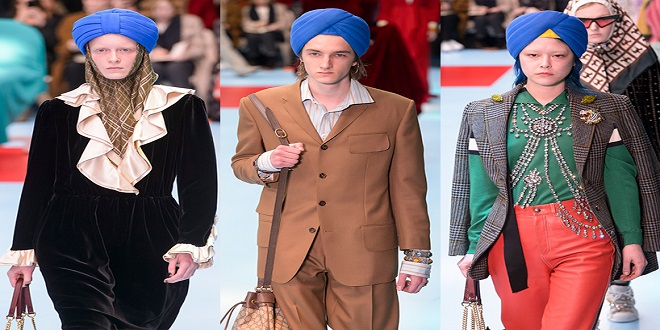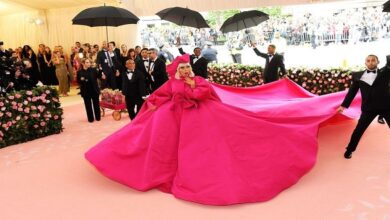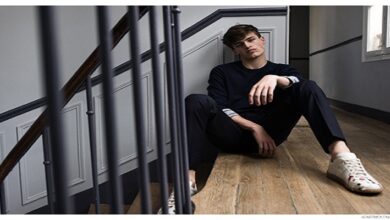
The evidence of the juncture between fashion, music, and dance was marked when Strauss’s music inspired the waltz and gracious nineteenth-century ballroom gowns; when 1920s jazz provided the tempo to swing the lightweight Charleston-fringed dresses; and when modern South American dancing set the stage for sexually charged, tight-fitting tango garments.
In the 1930s, musical theatre and Broadway shows exerted a great influence on everyday fashion as Rodgers and Hammerstein’s musical scores created a new Hollywood cultural genre with its unique concept of glamour. During the Depression years, Hollywood movies became a sanctuary, a form of escapism for many audiences. The more visually spectacular the performance was, the easier it was to forget the hardships of the time.
Fred Astaire and Ginger Rogers were a source of inspiration for fashion-oriented cineastes in movies such as Top Hat (1935) and Swing Time (1936), which linked Big Band music with glamorous clothing. Paradoxically, while an annual Paris Syndicale de la Couture competition awarded a coveted prize to the most sensational evening dress creation between 1935 and 1939, at the same time, dance marathons in America pushed the endurance of its unemployed competitors to the limit, while fashion companies’ advertisements were used at these events to promote ritzy club fashion.
Postmodernism in fashion and art
Paralleling the emergence of global conglomerates, the term ‘postmodernism’ was applied to design and design movements that emerged from the 1960s to the present day. Fundamentally, postmodernism can be characterized by a number of things, seen individually or in combination with each other. First, it is essentially anti-modernist— ‘modernism’ being a term referring to idealism and the concept of ‘good taste in design, which dominated the visual arts in the period between the world wars. In fashion terms, it could be translated as anti-haute couture or anti-fashion.
This could include the use of deconstructivist sewing, pattern-making, or cutting techniques, which created a less than perfect finish. On the one hand, it could reference fashion that produces a form of ugliness, breaking the codes of classical beauty. On the other hand, it could be self-mocking, a self-reflexive comment on individual taste, upon the fashion industry itself, or the attitudes and mores of a particular society or group within that society.
Popular culture and pastiche: quant, courrèges, cardin, saint laurent and ashley
Celebrity status for movie stars, television stars, pop singing idols, rock groups, and fashion models increased dramatically during the 1960s and 1970s. Carnaby Street in London became the fashion Mecca for the young. Mary Quant, with no formal training in 94 A CULTURAL HISTORY OF FASHION IN THE 20TH AND 21ST CENTURIES dressmaking or couture, established Chelsea’s first fashion boutique, Bazaar, in 1955 with her husband, Alexander Plunkett-Greene, and Archie McNair. She epitomized a new breed of designer trained at art school, unafraid to defy mainstream ideas and an enthusiastic promoter of new ideas.
The boutique capitalized on the buying power of the new, young clientele by specializing in a mode of dress that encompassed specific fashion accessories—bags, hats, jewelry, stockings, and even cosmetics. Even more significantly, she defied the fashion system—which manufactured two new styles per year—by following current fads and changing her styling every six weeks. Interestingly, the Bazaar boutique pioneered a revival of old-time shopping patterns, when small, family-owned businesses catered for personalized service—a practice that diminished when department stores were conceived.
Last word
The rise of the boutique in London paralleled the growth of retail chain stores (which were, by then, firmly entrenched in the United States) and of Marks and Spencer, 3 which had become ‘a byword for democratic fashion in the 1950s. Gaining popularity, the store expanded in 1975 by opening a branch in Paris.




